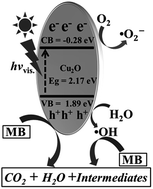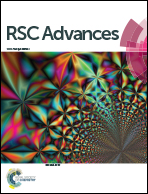Microemulsion-mediated synthesis of sedum rubrotinctum shaped Cu2O architecture with efficient sunlight driven photocatalytic activity
Abstract
A novel Cu2O sedum rubrotinctum shaped architecture has been successfully synthesized in a water/oil (w/o) microemulsion. The obtained Cu2O sample was evaluated for its ability in the degradation of methylene blue under sunlight irradiation. It was found that a degradation of 98.94% was achieved in 90 min irradiation time.


 Please wait while we load your content...
Please wait while we load your content...